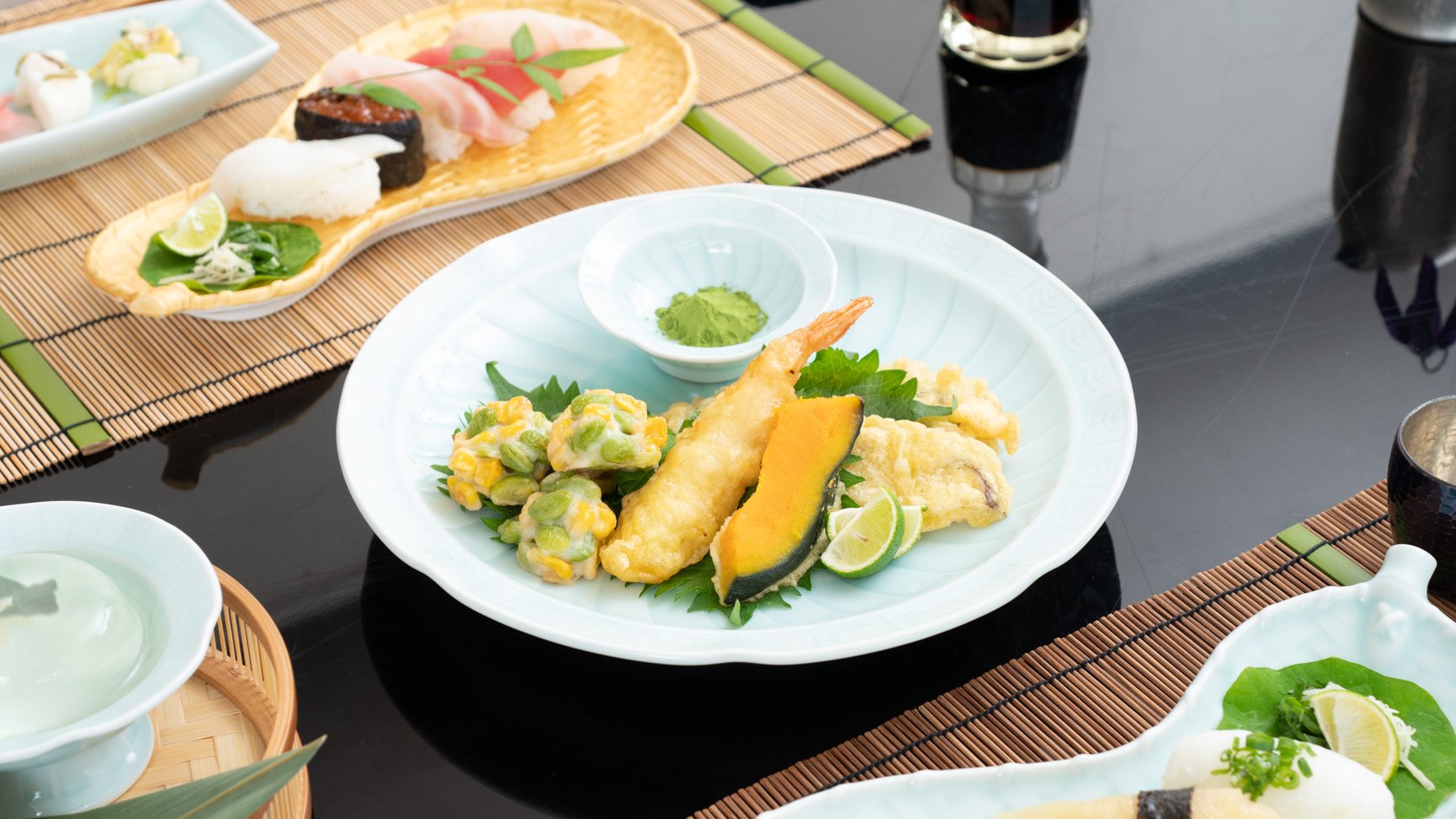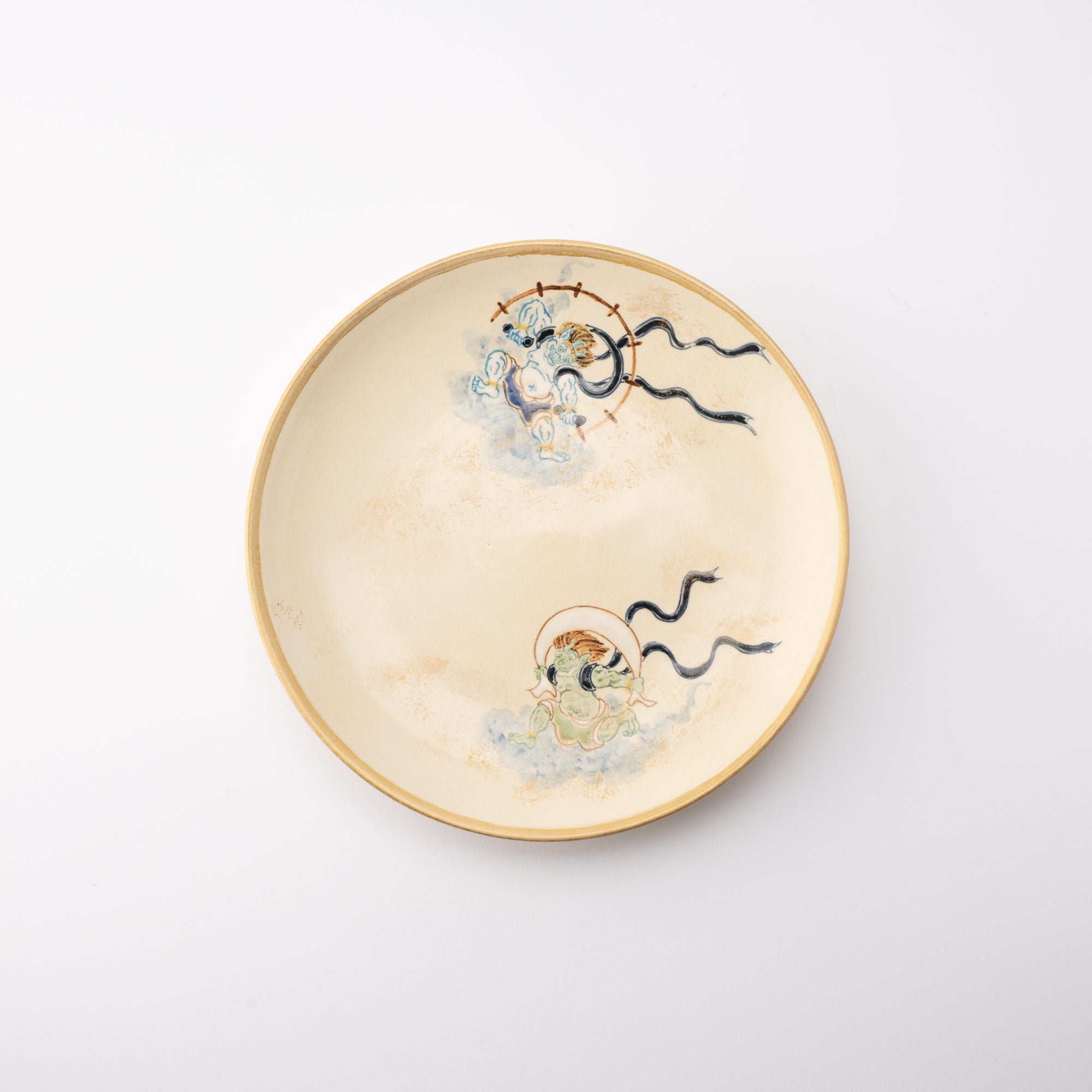
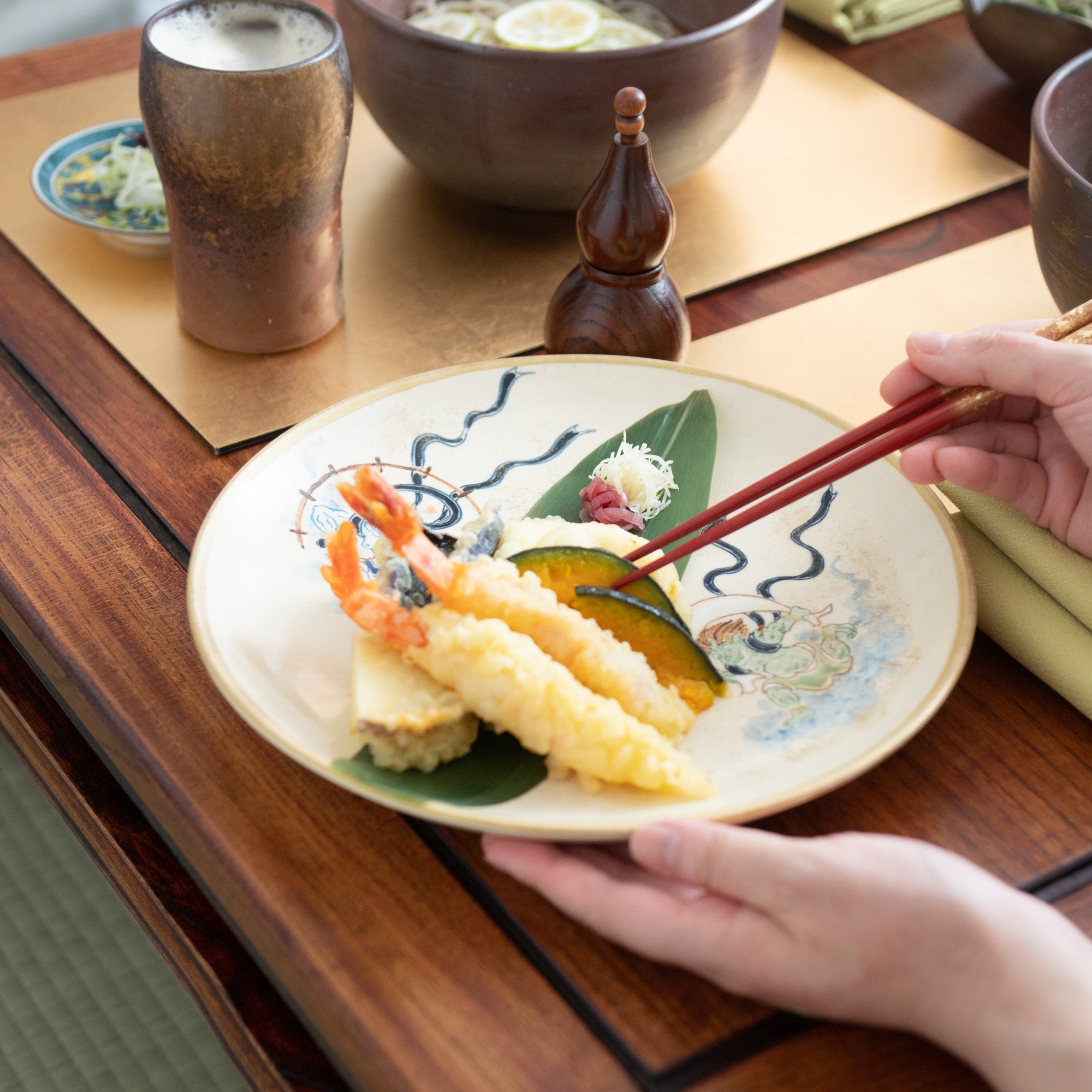
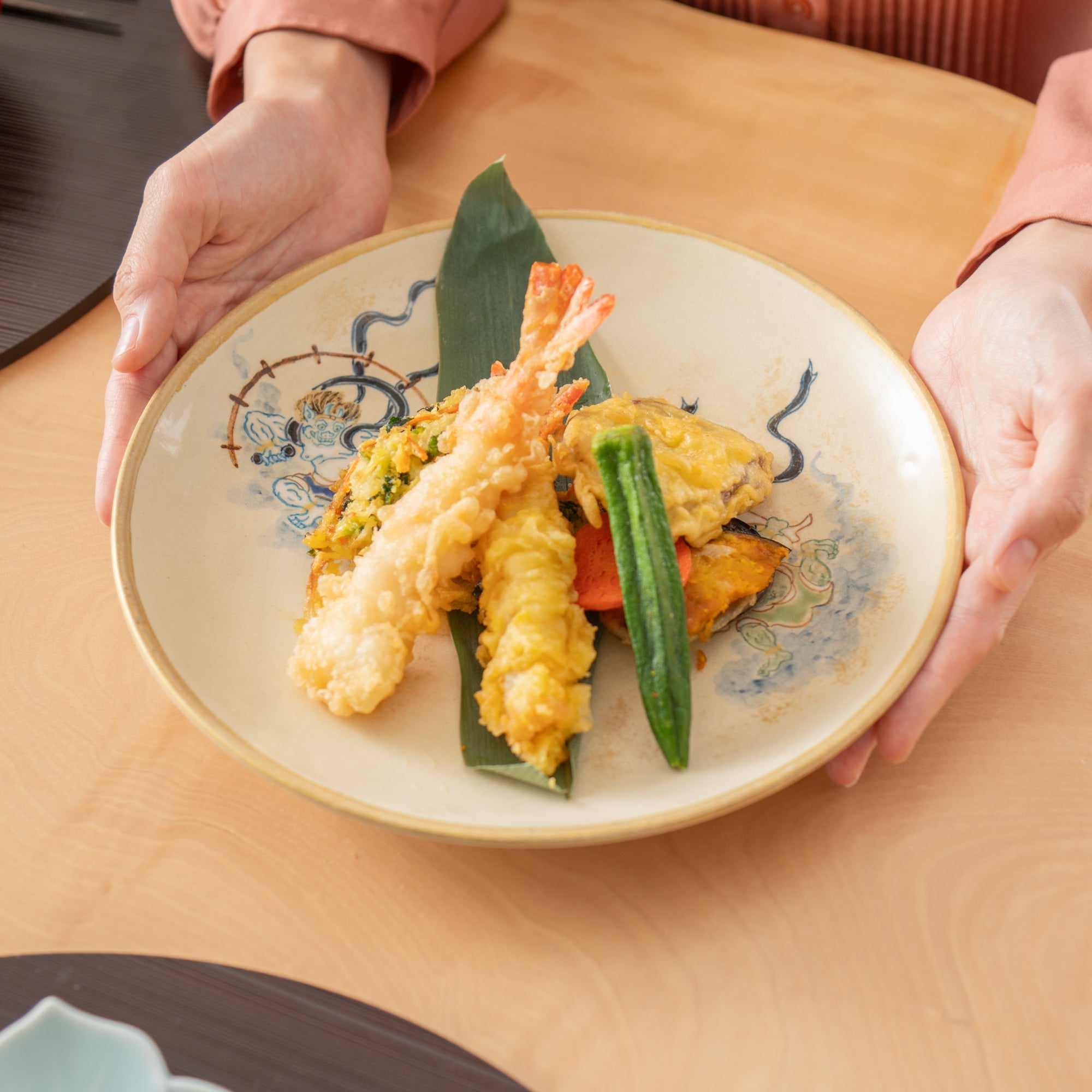
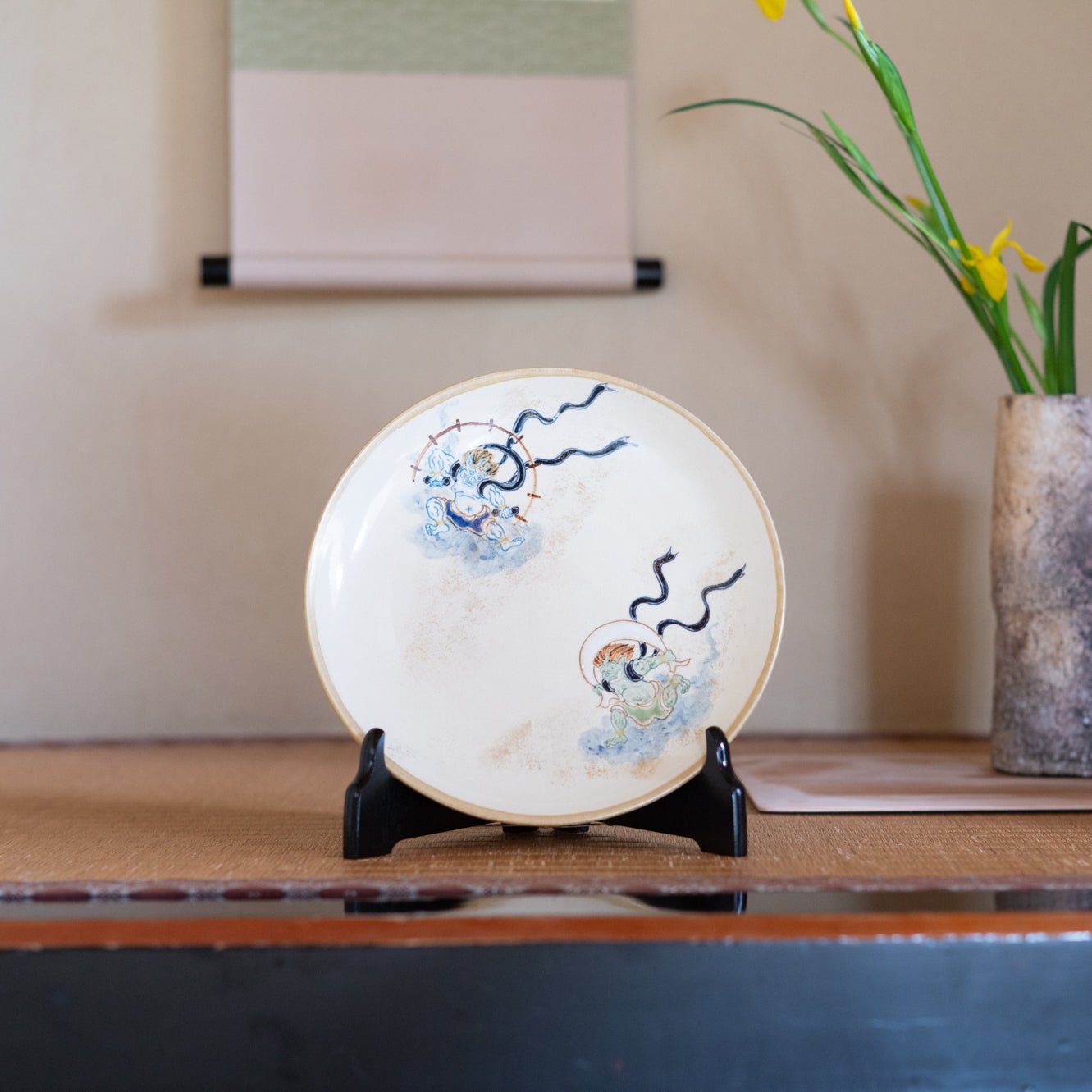
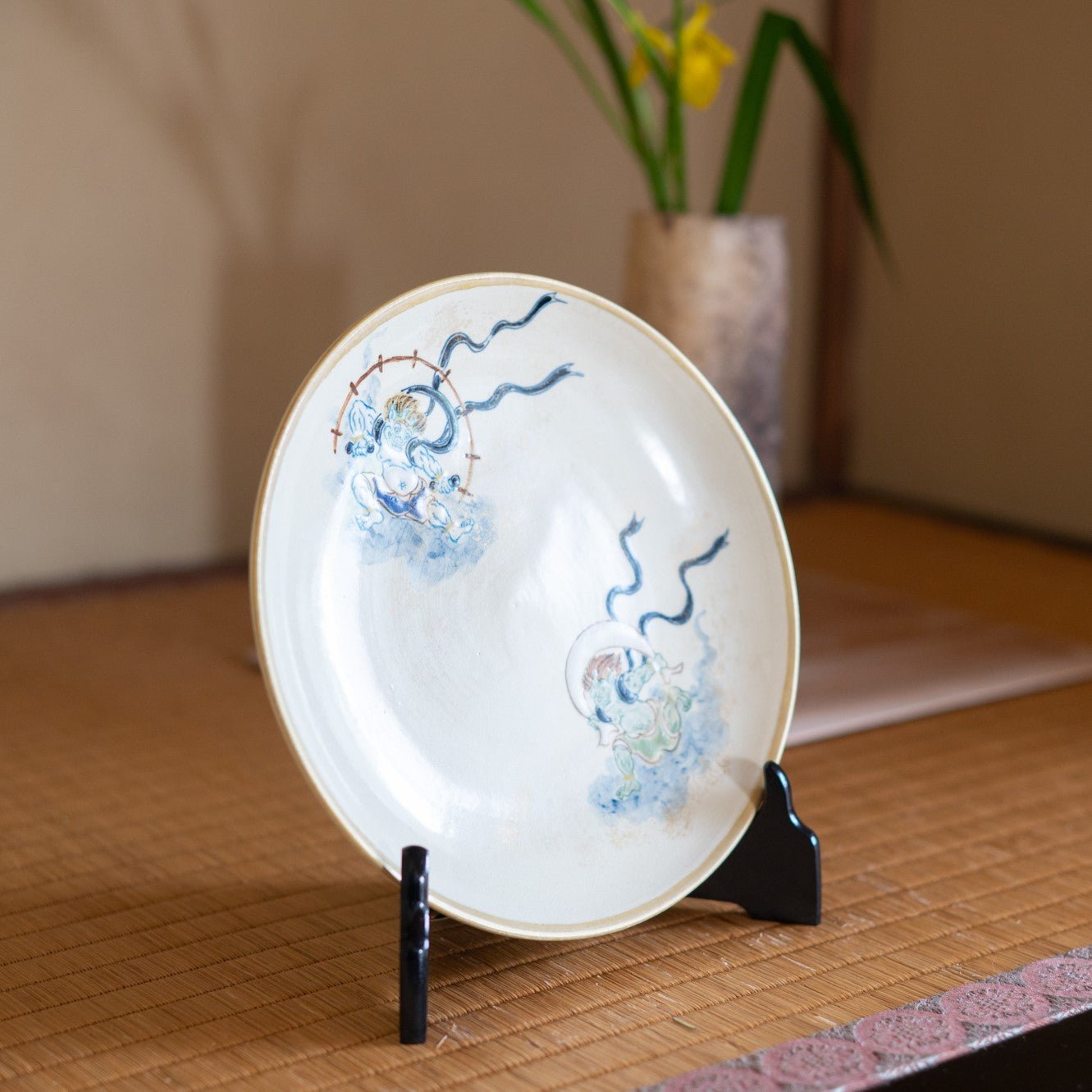
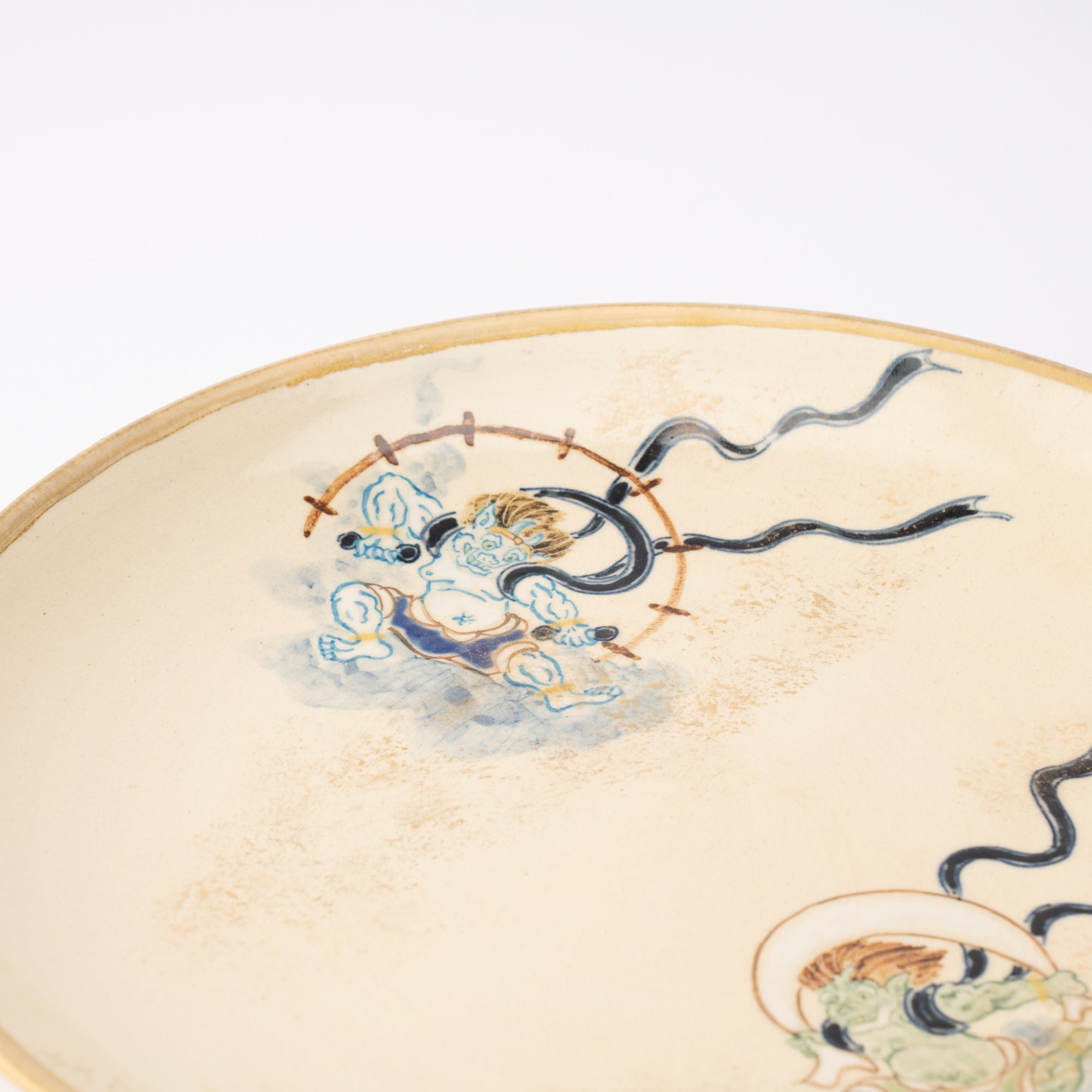
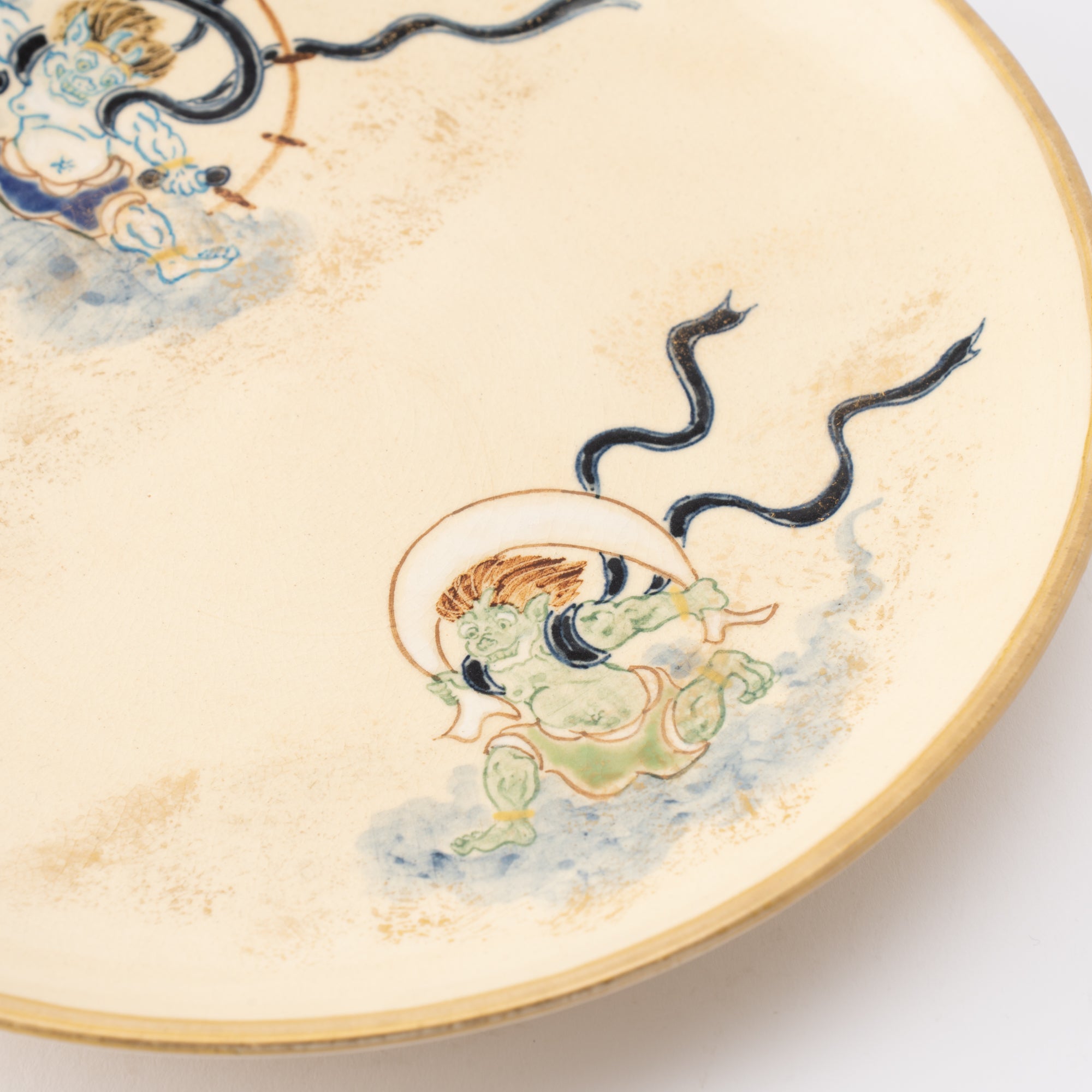
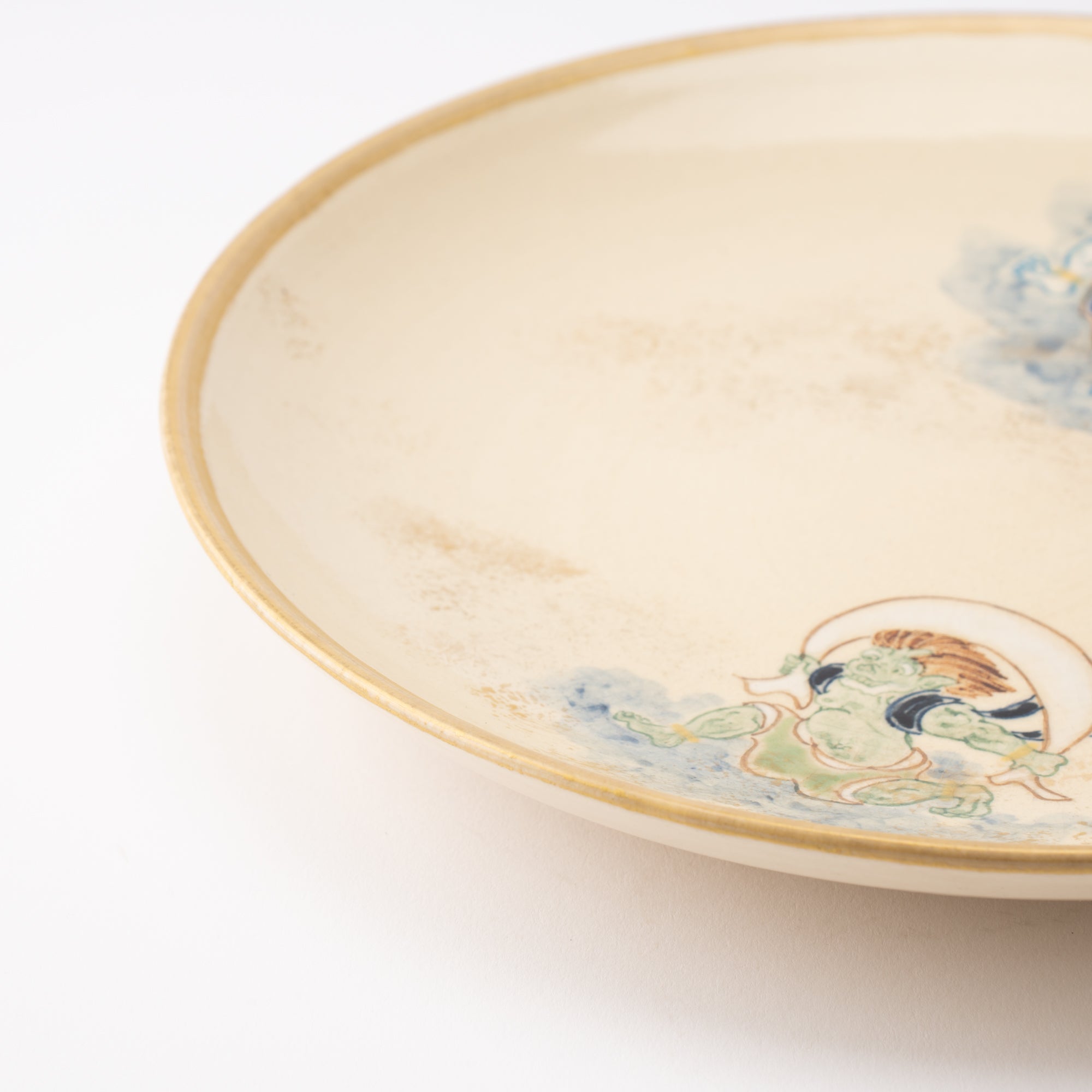
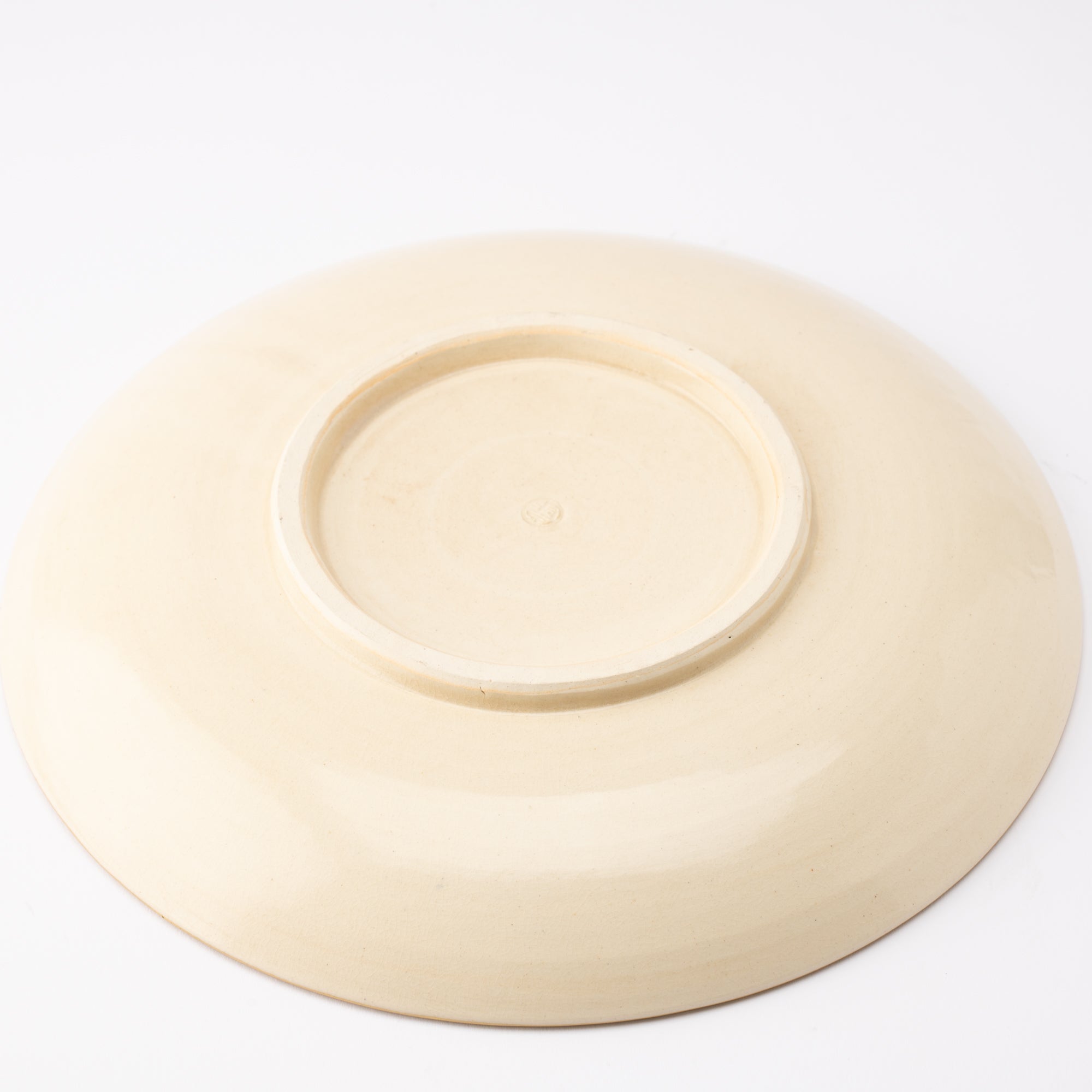
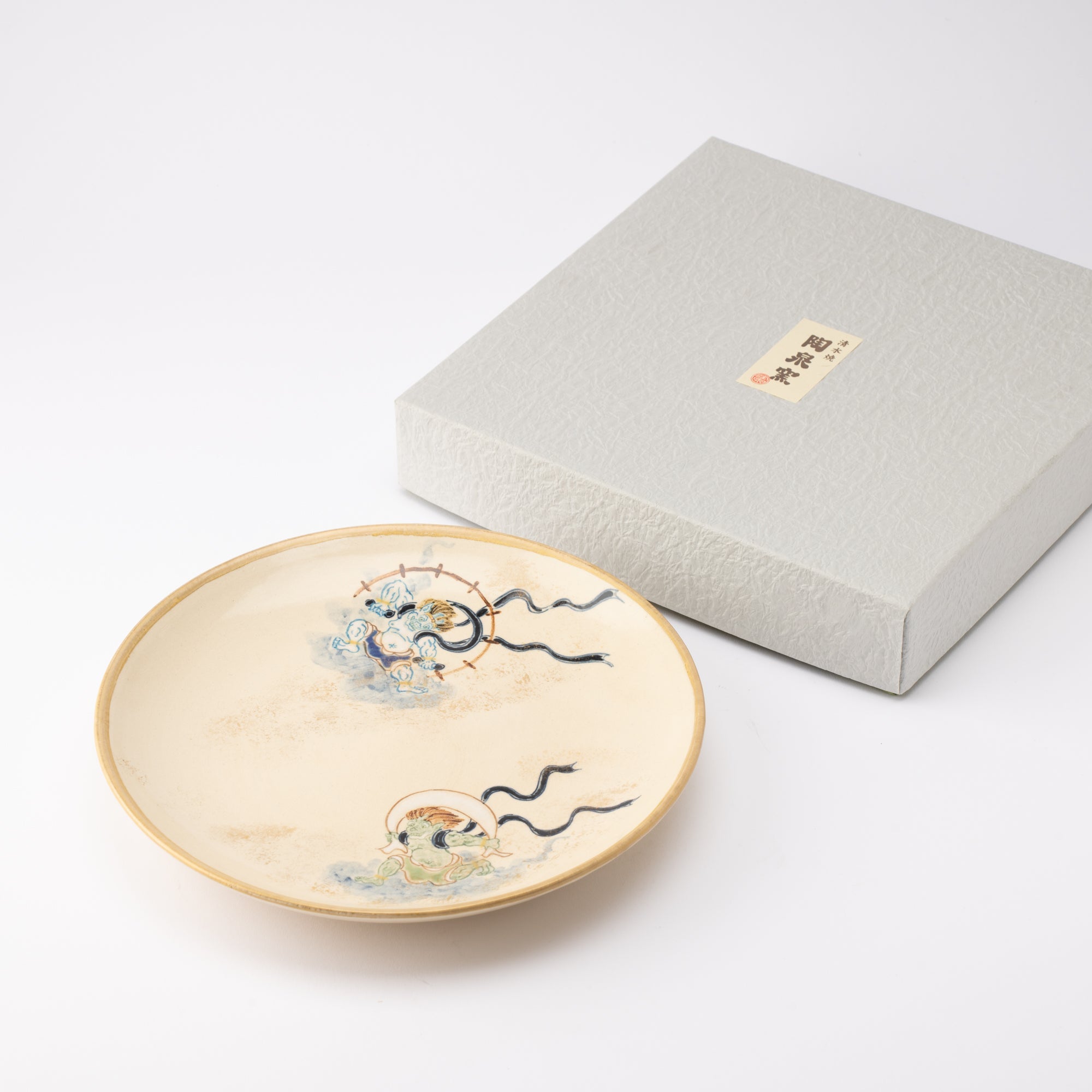
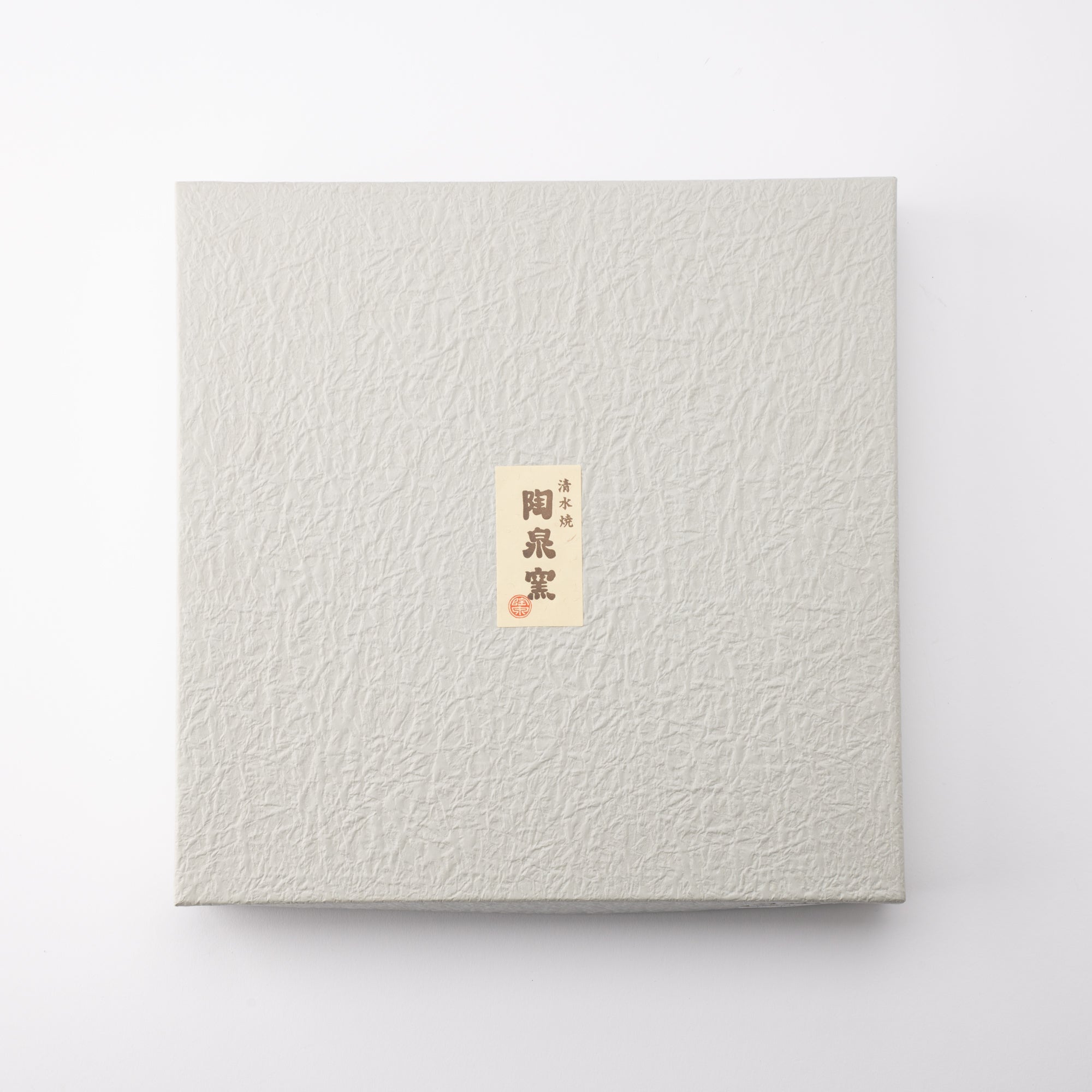
Runder Essteller „Windgott und Donnergott“
Estimated Shipping Widget will be displayed here!
Mit dem unverwechselbaren Nami-Yu Glasur, die aus der Asche des Kyoto-Waldes hergestellt wird, hat der Teller eine natürliche Grundfarbe in gelblichem Cremeweiß.
Die Bemalung erfolgt durch individuelle Maler im japanischen Stil, die Originalität und Tiefe anstreben und dabei über die Erwartungen an eine bloße Dekoration hinausgehen. Dieses besondere Stück präsentiert die Gottheiten von "Fujin Raijin“ (Windgott und Donnergott). Sie sind nicht nur Gottheiten des Übernatürlichen, sondern gelten auch als Begleiter des weisen Buddha. Der Windgott reitet auf seiner Wolke und trägt ein Tuch, mit dem er den Wind nach seinem Willen kontrollieren kann, und der Donnergott hält einen Trommelring.
Den letzten Schliff erhält der Teller durch eine Goldbeschichtung. Aufgrund seiner empfindlichen Eigenschaften kann Gold nur als Überglasur aufgetragen werden, um seine schöne Farbe optimal zur Geltung zu bringen.
Es hat einen Durchmesser von 24 cm und kann als Essteller verwendet werden, um bei einer kleinen Runde reichlich Sushi zu servieren. Das beeindruckende Gemälde lässt sich auch gut auf einem Tellerständer präsentieren.
EINZELHEITEN
| Quantity | 1 |
| Size | D 24 cm (9.4 in) x H 3.7 cm (1.5 in) |
| Material | Stoneware |
| Package Type | Paper box |
| Microwave | No |
| Dishwasher | No |
Hersteller / Marke
Tosen Kiln wurde 1868 als Großhändler für Kiyomizu-Ware gegründet. 1944 eröffnete das Unternehmen ein Produktionsstudio in Mukomachi, einem Vorort von Kyoto, und begann damit die Produktion von Kiyomizu-Ware in großem Maßstab. Heute ist der Ofen in Gojo, Kyoto, in Betrieb und führt sein handwerkliches Erbe fort.
Tosen Kiln hat sich der Verfeinerung seiner Techniken und seines künstlerischen Feingefühls verschrieben und greift die traditionelle Handwerkskunst Kyotos auf, während es sie an die Moderne anpasst. Inspiriert vom Töpfermeister Nonomura Ninsei aus der Edo-Zeit, bewahrt das Unternehmen dessen präzise Drehtechniken und leuchtenden Malstil und verbindet diese mit klaren Linien und warmen Tönen, um Stücke zu schaffen, die mit der zeitgenössischen Ästhetik harmonieren.
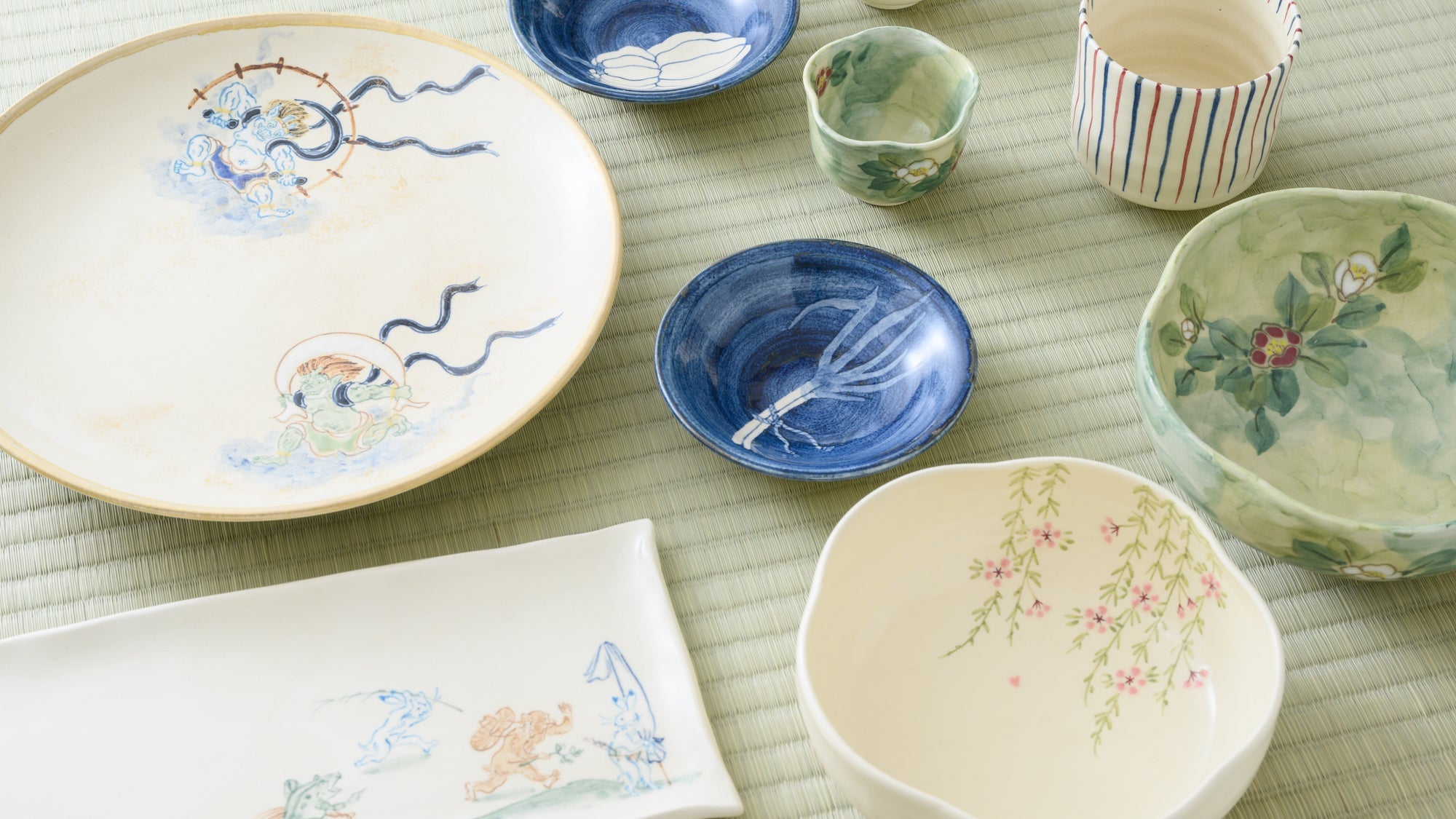
Kunsthandwerk
Kyo- und Kiyomizu-Ware, zusammen als Kyo-yaki und Kiyomizu-yaki bekannt, sind berühmte Keramikstile aus Kyoto. Bekannt für ihr lebendiges Design, ihre fein geformten Formen und die Liebe zum handwerklichen Detail, spiegeln diese Waren Kyotos unverwechselbaren Sinn für Schönheit und künstlerische Raffinesse wider.
Kyo- und Kiyomizu-Ware zeichnen sich durch eine lange gepflegte Vielfalt aus und greifen auf Techniken und Stile der Töpfertraditionen Japans zurück. So entwickelte sich eine ausdrucksstarke und typisch Kyoto-Kunstform. 1977 als traditionelles japanisches Kunsthandwerk anerkannt, werden sie bis heute wegen ihrer kulturellen Tiefe und Alltagstauglichkeit geschätzt.

Optionen auswählen











Estimated Shipping Widget will be displayed here!
Teller
Diese Kategorie umfasst Teller mit einem Durchmesser von 21 cm (8,3 Zoll) bis 30,9 cm (12,2 Zoll). Für traditionelle japanische Gerichte sind Teller mit einem Durchmesser von etwa 8 Zoll am praktischsten. Für ein Tellergericht oder Pasta hingegen sind Teller mit einem Durchmesser von etwa 25 cm (10 Zoll) praktischer.
